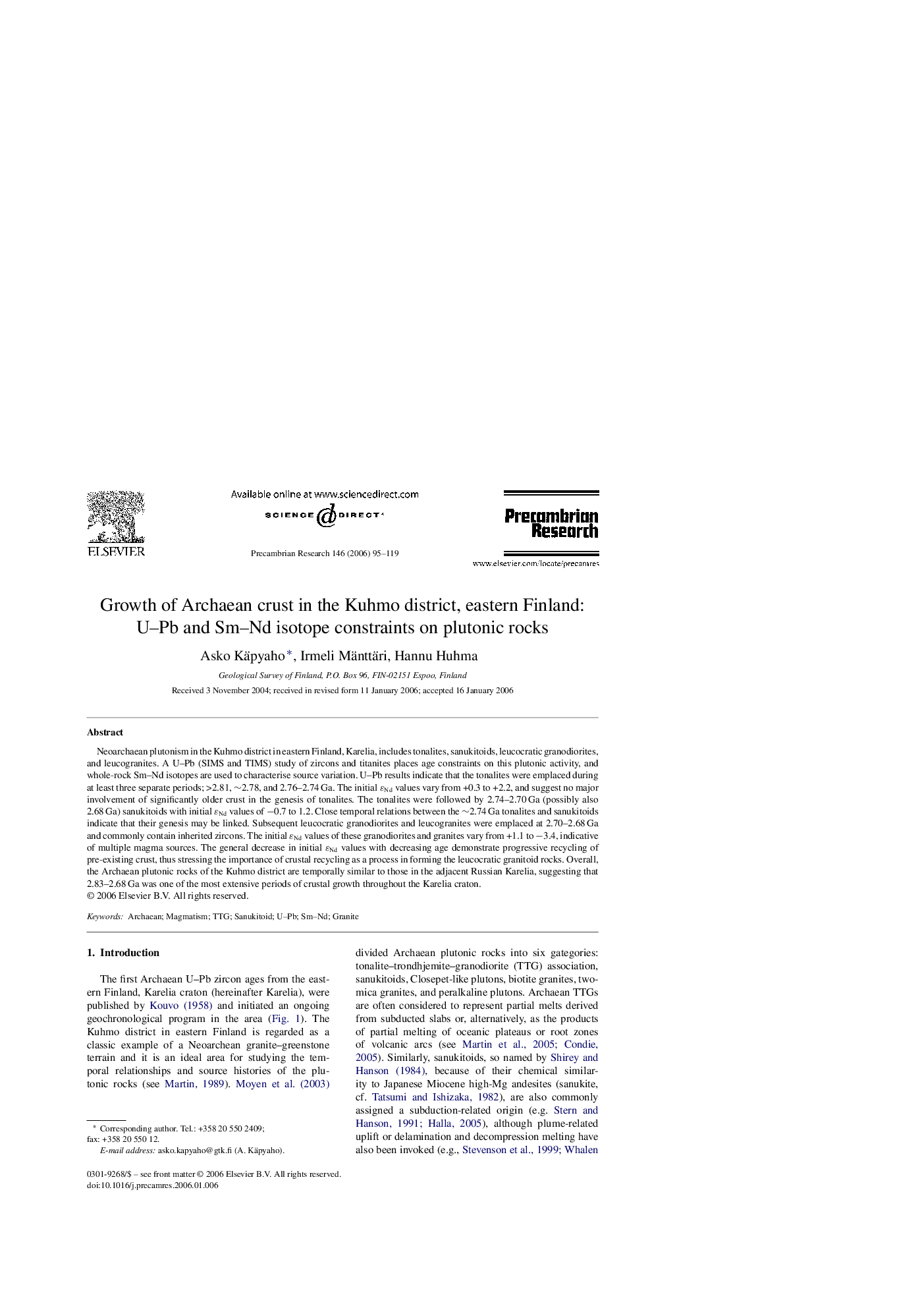| Article ID | Journal | Published Year | Pages | File Type |
|---|---|---|---|---|
| 4724692 | Precambrian Research | 2006 | 25 Pages |
Abstract
Neoarchaean plutonism in the Kuhmo district in eastern Finland, Karelia, includes tonalites, sanukitoids, leucocratic granodiorites, and leucogranites. A U-Pb (SIMS and TIMS) study of zircons and titanites places age constraints on this plutonic activity, and whole-rock Sm-Nd isotopes are used to characterise source variation. U-Pb results indicate that the tonalites were emplaced during at least three separate periods; >2.81, â¼2.78, and 2.76-2.74Â Ga. The initial ÉNd values vary from +0.3 to +2.2, and suggest no major involvement of significantly older crust in the genesis of tonalites. The tonalites were followed by 2.74-2.70Â Ga (possibly also 2.68Â Ga) sanukitoids with initial ÉNd values of â0.7 to 1.2. Close temporal relations between the â¼2.74Â Ga tonalites and sanukitoids indicate that their genesis may be linked. Subsequent leucocratic granodiorites and leucogranites were emplaced at 2.70-2.68Â Ga and commonly contain inherited zircons. The initial ÉNd values of these granodiorites and granites vary from +1.1 to â3.4, indicative of multiple magma sources. The general decrease in initial ÉNd values with decreasing age demonstrate progressive recycling of pre-existing crust, thus stressing the importance of crustal recycling as a process in forming the leucocratic granitoid rocks. Overall, the Archaean plutonic rocks of the Kuhmo district are temporally similar to those in the adjacent Russian Karelia, suggesting that 2.83-2.68Â Ga was one of the most extensive periods of crustal growth throughout the Karelia craton.
Related Topics
Physical Sciences and Engineering
Earth and Planetary Sciences
Geochemistry and Petrology
Authors
Asko Käpyaho, Irmeli Mänttäri, Hannu Huhma,
